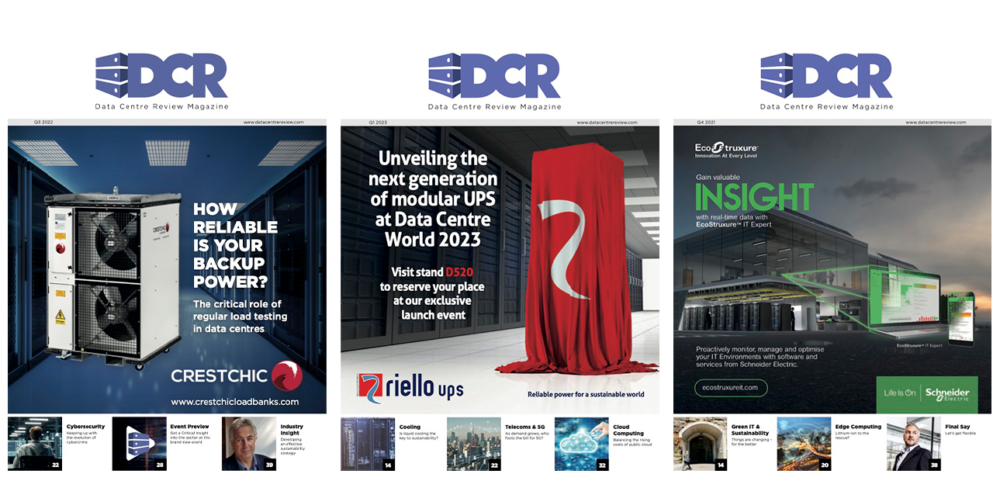Pointing to AIGZ thresholds that outstrip current locations, Charlie Bruinvels, Head of Land Intelligence at BCS, calls for collaborative, region-first Energy Infrastructure Projects from Scotland to Leeds and Wales to make AI viable beyond west London.
Earlier this year the UK Government announced a new initiative to boost AI infrastructure and innovation. This was a follow-up to the decision to class data centres as part of the Critical National Infrastructure alongside energy and water systems and saw the creation of AI Growth Zones (AIGZ).
AI Growth Zones are designated areas with enhanced access to resources like power and a more streamlined approach to planning. The UK Government says they will support the planning approach to attract investment, drive innovation and strengthen the UK’s position as a global leader in AI.
This all sounds great, but how will it work in practice?
Having reviewed the initiative ‘AI Growth Zones: Open for Applications’, in summary it sets out the parameters required for a particular location to be classified as an AIGZ. The parameters are split into categories for Technical Feasibility, Delivery Feasibility, Local Impact and the Level of Government Support Requested.
Taking a deep dive into the technical parameters, we can see the requirements for power, water and land are enormous. For example, the minimum power supply required is 500MW by 2030 per zone, which is significant when we consider that most data centres over the last decade have been up to 50MW. There are also requirements for access to water, a minimum plot size and to have consented planning by 2028.
So where are we going to find all these sites that can meet these requirements?
Well in simple terms we aren’t because they don’t exist and that is before you factor in the broader infrastructure context that is at play here too – as the data centre sector is not the only one that needs power. As a result, I believe that the ‘Data Centre Masterplan’ needs to be reconsidered.
A good starting point for this is to imagine that we are creating an Energy Infrastructure Project, of which the data centre is just a small part, and that way we can start to consider the scale of the project required. Key to this is the 500MW minimum set out in the initiative as approaching the National Grid for a dual 500MW connection is going to be challenging to say the least.
Firstly, we need to identify the power sources that can deliver to that level and also provide the same reliability we are used to with a traditional dual-fed grid connection. This means that opening the door to other sources is essential and there is a significant draw towards a direct connection to renewable sources of power, such as tidal, wind, solar and also through technology such as gas turbines.
We also need to consider the infrastructure onsite to manage the power load, which means there is a requirement for high-specification energy centres and switchgear.
Could Energy Infrastructure Projects be the answer?
The concept of the Energy Infrastructure Project can also meet the other requirements of the AIGZ initiative around Local Impact and Delivering Feasibility. The initiative calls for the site to enhance the surrounding regional innovation ecosystem and provide local benefits such as jobs, investment in local infrastructure, and the regeneration of brownfield land.
The scale of these sites is such that brownfield land becomes attractive and huge investment is required to develop the site. Furthermore, thousands of jobs will be generated across the UK not only for the construction phase, but also to operate these facilities.
Making it feasible
The final part of the initiative is ‘Delivering Feasibility’. The initiative states that sites in existing low grid congestion areas will be looked at favourably and this is critical for Energy Infrastructure Projects as they will also be generation facilities.
The initiative also sets out a requirement to demonstrate the initial proposals and delivery team and at BCS we are championing collaboration between the Local Authority, renewable technology businesses, contractors and data centre operators, as we believe that this is essential to get a project at this scale off the ground.
Driving regeneration
Thinking back across the last decade, data centres in the UK have been clustered in west London and Slough, and the AIGZ initiative calls for the industry to look elsewhere. This makes markets such as Scotland, Leeds and Wales particularly appealing when considering where to position an AIGZ – as they all tick several of the boxes and we may also see significant regeneration in these areas.
Data centres are just part of the solution
Moving forward, if the sector is going to maximise the opportunities for AI and support the UK Government’s plans which commit to building a ‘cutting-edge, secure, and sustainable AI infrastructure’ then we have to address the issue that power is most likely a limiting factor. By making the data centre part of the solution rather than the solution on its own, and focusing on developing Energy Infrastructure Projects, we can ensure that the UK is at the heart of the AI revolution.



